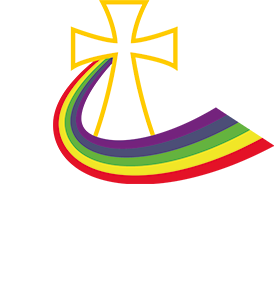Anti-Bullying at St Mary's
St Mary’s aims to prevent bullying through:
- The school’s ethos and mission of With Christ at the Centre, we show Unity, Respect, Joy, Love and Courage
- A curriculum which fosters good relationships with each other.
- Every classroom has a ‘worry box’ which teachers will check regularly.
- Annual anti-bullying and internet safety days.
- The school’s curriculum which encompasses PSHE, RSE, mental health and well-being.
- Virtues to Live by Curriculum
Click link to view our: Anti-Bullying Policy
Our Strategy for dealing with Bullying
Wave 1
A member of staff talks with those involved and decides if further action is required.
Reinforces with those involved the school’s stance with regard to bullying. This should be handled quickly and sensitively.
This will involve an appropriate member of staff following the following procedures:
- Talk with victim to understand feelings
- Talk with bully to give the “evidence” of distress / hurt; to reinforce view that behaviour is unacceptable; to encourage bully to make a response to the victim seeking to improve relationship
- In talks with both victim and bully seek to discover whether there are underlying “reasons” for behaviour
- Feedback to victim
- Monitoring (may involve use of staff or peers)
Possible strategies:
- Anti-bullying policy/charter – shared/ understood by all
- Whole school awareness raising via assemblies, display, competitions, drama etc
- Anti-bullying education via PSHE etc
- Appropriate adult supervision during both curriculum and non-curriculum time
- Whole staff development including additional adult support if needed– awareness and responding to incidents
- Transparent systems for reporting bullying incidents
- Clear hierarchy of consequences on our School Behaviour Policy
- Increased positive behaviour strategies
- TA support listening
- Pupil interviews
Wave 2
If a child is being bullied over a period then the Headteacher informs the child’s parents. If a child is repeatedly involved in bullying other children, we inform the Headteacher and the SENCO. We then invite the child’s parents into the school to discuss the situation.
- Behaviour needs to be further investigated by the appropriate member of staff
- Behaviour investigated to assess nature and severity of the behaviour: all those involved including bystanders talked to: behaviour records checked: parents informed, involved as appropriate and provided with regular feedback
- Priority is to protect and provide support for the victim (s) of bullying, and then to seek to resolve the conflict
- Provide help to change behaviour of those bullying
- Bystander behaviour addressed
- Parents informed and involved
Possible strategies:
- Headteacher monitoring
- Support for targets of bullying via peers or adults
- Mediation opportunities
- Restorative practices
- Groupwork opportunities around self- esteem, anger management strategies etc.
- Audit of opinions and experience of bullying within specific vulnerable groups
- Meetings with parents/carers
Wave 3
If behaviour is potentially so serious that it has to be referred to a senior member of staff, and if appropriate the Child Protection Designated Person – Mrs Tomlinson or in her absence Mrs Bleasdale or Mr Verhees.
- Senior member of staff informs parents immediately and meeting arranged as soon as possible (unless such action could put a child at risk)
- Appropriate senior member of staff instigates immediately an investigation and decides whether case needs to be referred to external agency, for example Child Protection and / or Police or Early Help
- Where external agencies involved further school action needs to be agreed with involved agencies
Possible Strategies
- One to one counselling opportunities
- Multi-agency support
- One to one learning opportunities around self-esteem, anger management strategies
- Early Help Assessment




